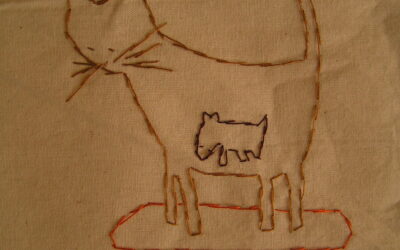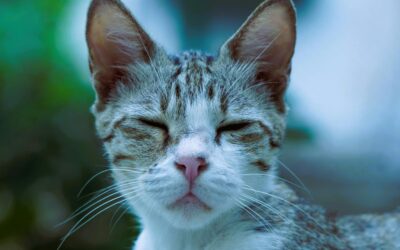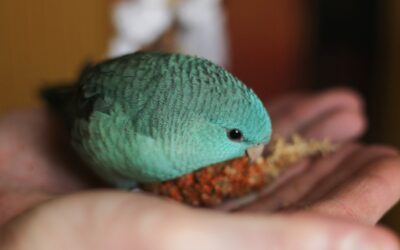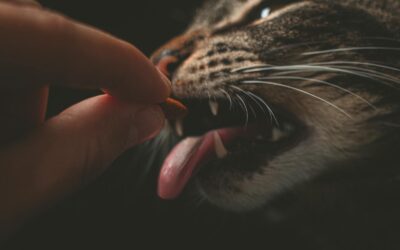Pet Lizards, with their prehistoric allure and unique appeal, have been capturing the hearts of pet enthusiasts for decades.
From the novice reptile owner to the seasoned herpetologist, the world of pet lizards offers an array of captivating species that can serve as both educational companions and endearing friends.
In this comprehensive guide, we’ll slither through the varied terrains of lizard ownership, shedding light on their care, behavior, and the joy these great pets can bring to your life.
In-Depth Look at Common Types of Pet Lizards
Exploring the world of the best lizard pets reveals a diverse tapestry of species, each with its unique characteristics, care requirements, and appeal.
Understanding these differences is key for prospective pet owners to find a lizard that matches their lifestyle and expectations. Below is a closer look at some of the most popular types of pet lizards, shedding light on what makes each special.
Bearded Dragons
Originating from the deserts of Australia, Bearded Dragons (Pogona vitticeps) are distinguished by their calm demeanor and expressive behavior. They are relatively easy to care for, requiring a diet of insects and vegetables, and a warm habitat. Their social nature and tolerance for handling make them an ideal choice for beginners.
Leopard Gecko
Leopard Geckos (Eublepharis macularius) captivate with their vibrant patterns and nocturnal activities.
Hailing from the arid regions of South Asia, these geckos thrive in a simpler enclosure without the need for specialized lighting. They eat a diet of insects and are known for their long lifespan and ease of handling, making them perfect for first-time reptile owners.
Crested Geckos
Crested Geckos (Correlophus ciliatus) from the rainforests of New Caledonia offer a unique appearance with their eyelash-like crests.
They are nocturnal, arboreal lizards that enjoy a diet of fruits, insects, and commercial crested gecko food. Their ease of care, coupled with a gentle disposition, has made them increasingly popular pets.
Chameleons
The Chameleon family, including species like the Veiled Chameleon (Chamaeleo calyptratus) and the Panther Chameleon (Furcifer pardalis), is renowned for their color-changing ability and distinctive rolled-up tails.
They require more specialized care, including precise humidity and temperature controls, making them better suited for the experienced reptile enthusiast.
African Fat-Tailed Geckos
African Fat-Tailed Geckos are a popular choice for reptile enthusiasts due to their docile nature and unique appearance.
Originating from the Saharan areas of West Africa, these geckos are nocturnal creatures, known for their distinctive fat tails, which they use to store fat and nutrients.
They have a calm demeanor and are relatively easy to care for, making them an excellent choice for beginners. Their diet mainly consists of insects, and they thrive in a warm, humid environment that mimics their natural habitat.
With proper care, African Fat-Tailed Geckos can live up to 15-20 years, providing companionship and entertainment to their owners with their interesting behaviors and engaging personalities.
Iguanas
The Green Iguana (Iguana iguana) is a larger lizard native to South America, known for its striking appearance and vegetarian diet. They require spacious enclosures with plenty of vertical space for climbing and basking.
Their complex needs and sizable adult length make iguanas more suited to those with ample space and advanced reptile care experience.
Each of these lizard types brings something unique to the terrarium, from the desert-dwelling Bearded Dragon or the Blue Tongue Skink to the rainforest-dwelling Crested Gecko.
When considering a pet lizard, it’s essential to research and understand not just the visual appeal of these creatures but also their care needs, dietary requirements, and behaviors to ensure a happy and healthy life under your care.

Care and Maintenance
Providing an optimal environment for your new pet is crucial to their well-being.
From the nuances of their terrarium to the fine-tuning of the thermal gradient, here’s how to create a home your lizard will adore.
Habitat Setup and Temperature Control
Understanding the specific habitat needs of your chosen species is imperative. Sandy deserts for the Bearded Dragons, forest floor landscapes for the cresties – each requires a unique setup.
A balanced thermal gradient, achieved through under-tank heating and basking lights, is essential for maintaining their health.
As always, Kate’s K9 Pet Care has your back. We know how important it is that you get your pet lizard the habitat they need, even when you’re busy at work. That’s where we come in! Kate’s K9 offers pet supply delivery. Contact us today!

Diet and Nutrition for Pet Lizards
Ensuring a proper diet is fundamental to the health and longevity of pet lizards, each species having its specific nutritional requirements.
Many lizards fall into one of three dietary categories: herbivores, carnivores, and omnivores, each requiring a different balance of nutrients.
Herbivores
Herbivorous lizards, such as the Green Iguana, thrive on a diet of leafy portions, vegetables, and fresh fruits. It’s crucial to provide a variety of greens such as collard, mustard, and dandelion to ensure a balanced intake of minerals and vitamins.
Fruits should be offered sparingly as treats due to their high sugar content. Supplementing their diet with calcium is often necessary to prevent metabolic bone disease.
Carnivores
Carnivorous lizards, like many species of monitor lizards, require a diet consisting primarily of meat, including insects, rodents, and sometimes even specific types of fish.
The nutritional content of their diet can be enhanced with calcium and vitamin supplements to meet their needs adequately. Feeder insects should be “gut-loaded,” or fed nutritious foods, to increase their nutritional value.
Omnivores
Omnivorous lizards, such as Blue-Tongue Skinks and Bearded Dragons, require a balanced diet of plants and protein.
This includes a mixture of vegetables, fruits, insects, and occasionally small amounts of appropriately sized lean meats. Offering a variety leads to a well-rounded intake of essential nutrients, mimicking their diverse diet in the wild.
Important Supplements
Regardless of their dietary category, most pet lizards benefit from vitamin and mineral supplements, particularly calcium and vitamin D3, to support bone health and prevent nutritional deficiencies.
The frequency and amount of supplements depend on the specific dietary needs of the lizard species and should be discussed with a veterinarian.
Proper diet and nutrition are critical for the health of pet lizards, and understanding the specific needs of your reptilian companion is essential.
By providing a varied and species-appropriate diet along with necessary supplements, you can ensure your lizard leads a happy, healthy life.

Health Concerns and Common Illnesses for Pet Lizards
Ensuring the well-being of a pet lizard requires an understanding of common health issues and how to prevent or address them.
Being cold-blooded, lizards rely on their environment to regulate body temperature, which makes them particularly susceptible to health problems in captivity.
Metabolic Bone Disease (MBD)
One of the most prevalent and preventable issues in pet lizards, particularly Bearded Dragons, is Metabolic Bone Disease.
This condition results from a lack of calcium or vitamin D3 in their diet, leading to weakened bones, deformities, and even death if left untreated. A balanced diet with adequate supplementation is vital in preventing MBD.
Respiratory Infections
Respiratory infections are a common concern for pet lizards, especially those housed in environments with inadequate ventilation or temperature fluctuations.
Symptoms include wheezing, discharge from the nose and mouth, and lethargy. Treatment often involves antibiotics and addressing the root cause of the infection.
Parasites
Intestinal parasites, such as roundworms and pinworms, can afflict pet lizards and cause serious health issues.
These parasites are often acquired through contaminated food or substrate, making proper hygiene and quarantine procedures critical in preventing infestations. A veterinarian should be consulted for diagnosis and treatment.
Skin Infections
Lizards can also suffer from skin infections caused by bacteria or fungi. These infections often manifest as redness, swelling, and abnormal shedding.
Regular cleaning of the enclosure and monitoring for any changes in the lizard’s skin can help prevent these issues. Treatment may include topical or oral medications prescribed by a veterinarian.
While these are some of the most common health concerns for pet lizards, it’s important to note that each species may have its unique set of ailments and illnesses.
Regular check-ups with a veterinarian who specializes in reptiles can help identify and address any potential health issues early on, ensuring the longevity and well-being of your scaly friend.

Behavior and Interaction
Lizard behavior is a vast and varied spectrum. Understanding their unique mannerisms and what constitutes normal behavior is key to fostering a respectful and rewarding relationship with your pet.
Understanding Lizard Behavior
From head-bobbing dominance displays to tail wags signaling submission, lizards communicate through a rich repertoire of actions. Familiarizing yourself with these behaviors will aid in decoding their messages and preventing unwarranted stress.
Bonding with Your Pet Lizard
The bonding process with a pet lizard may not involve cuddles, but it’s just as profound. Consistent care, feeding, and a tranquil environment will foster trust over time.
Handling and Socialization Tips
Proper handling is vital for both the comfort of your pet and your safety. Start with short sessions and gradually increase the duration to prevent undue stress. With patience and positive interaction, you’ll soon have a contented companion who enjoys your company.

Benefits of Having a Lizard Pet
The joys of having a pet lizard extend beyond their exotic charm. They offer several benefits that can enhance your life in more ways than one.
Educational Opportunities
For families and classrooms, pet lizards provide a window into the natural world, teaching valuable lessons about ecosystems, adaptation, and responsible care.
Therapeutic Companionship
The tranquil presence of a lizard can be remarkably calming, making them excellent companions for individuals seeking solace after a long day.

Conclusion
Pet lizards offer an exciting and rewarding experience for those willing to take on the responsibility of their care. With proper research, preparation, and attention to their health, these unique and fascinating creatures can make for excellent companions.
From the social Bearded Dragon to the colorful Crested Gecko, there’s a lizard species out there for everyone to enjoy.
So if you’re considering adding a pet lizard to your family, remember to do your homework, provide proper care and attention, and enjoy the journey of learning about these incredible reptiles vet check-ups and a carefully crafted wellness routine can keep these ailments at bay.







